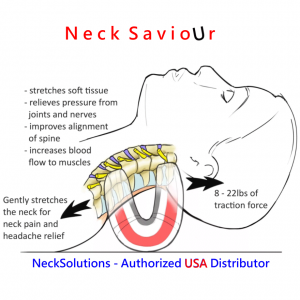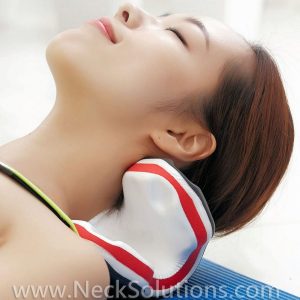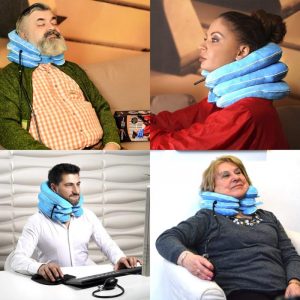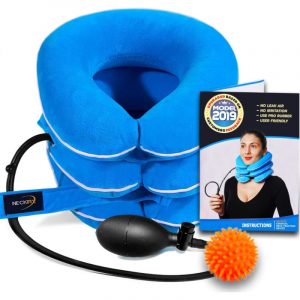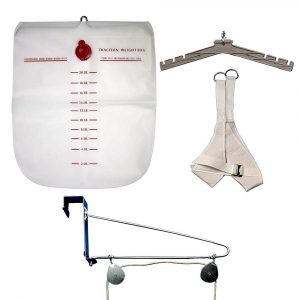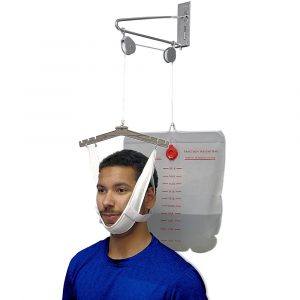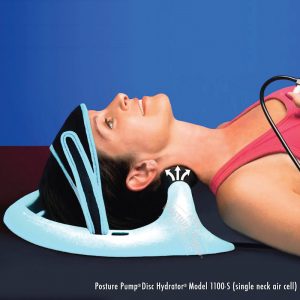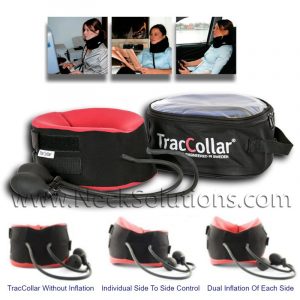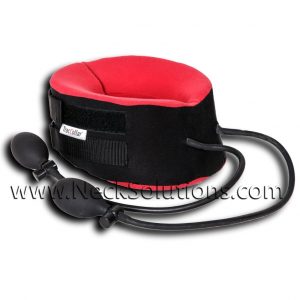Home Cervical Traction – A Plan To Manage Pain
Neck and spinal pain can lead to tremendous difficulties with the most basic of activities. Have a plan to manage your pain over the long-term to increase comfort and the level of movement you can comfortably endure. Letting the situation get away from you can be debilitating, sometimes permanently. A home cervical traction device can be an effective part of the plan.
Plenty Of TLC
Cervical disc disease, along with many common types of injuries, create a situation that clearly calls for an initial period of physical rest during flare-ups. Take it easy on yourself, and nurse the area back to normalcy by limiting movement which creates pain. Maintain a comfortable, supported position when sleeping by using orthopedic designed cervical pillows as well as special neck positioning pillows and neck traction collars when sitting. Make sure your neck is not leaning toward one side or the other; it should remain as straight as possible, with no pressure to aggravate the injury or condition.
That is, keep your head in the most beneficial position. Most often, this should be a neutral position to minimize strain and compression. In some instances, your head will be more comfortable leaning toward one side, like when there is a pinched nerve, or the initial stage of a muscle strain.
Use Home Cervical Traction Equipment
 With the advent of technology using one of the latest devices designed to allow people the benefits of traction at home is easy and affordable. They are built for use at your own pace and far more convenient than traveling for therapy. You can perform resistance exercises to strengthen your neck muscles, gradually regaining agility and mobility. A recent study involving the use of traction for people with severe neck pain and pinched nerves found significant improvements following such exercises. Using cervical traction equipment can be a safe and convenient path to major breakthroughs in pain management and even total recovery for some.
With the advent of technology using one of the latest devices designed to allow people the benefits of traction at home is easy and affordable. They are built for use at your own pace and far more convenient than traveling for therapy. You can perform resistance exercises to strengthen your neck muscles, gradually regaining agility and mobility. A recent study involving the use of traction for people with severe neck pain and pinched nerves found significant improvements following such exercises. Using cervical traction equipment can be a safe and convenient path to major breakthroughs in pain management and even total recovery for some.
Alternate Hot And Cold Therapy
If you’re dealing with any level of inflammation, such as with a recent injury, doctors recommend cold therapy to reduce swelling. Most people who have cervical disc disease find that alternating heat and cold sources provides some level of relief. For those with chronic or long standing problems, heat is recommended. Leave the compress or heating pad on for no longer than 20 minutes, then wait about an hour before reapplying. New infrared heat provides an efficient and deep penetrating form of heat. Heat can be applied before using cervical traction, to make it more effective by relaxing the muscles.
Practice Good Posture
When the body is in any type of contorted position, the spine and neck suffer, particularly if this is done over an extended period of time. Make a conscious effort to sit, walk and lay down in a position that is advantageous, or at least not damaging, to your affected area(s). Be aware that improper neck posture will hasten disc degeneration. Home cervical traction will also help improve your posture very effectively, but it’s important that your spine be supported by correct ergonomic positioning wherever you are.
Debilitating pain will quickly take over your life. Take it back by learning how to effectively manage pain, and improve the situation in every way possible, taking advantage of great new products for managing pain like home cervical traction.
A study in the American Journal of Physical Medicine & Rehabilitation found that traction in the home setting provided relief of symptoms in up to 81% of the patients with mild to moderately severe cervical spondylosis.

